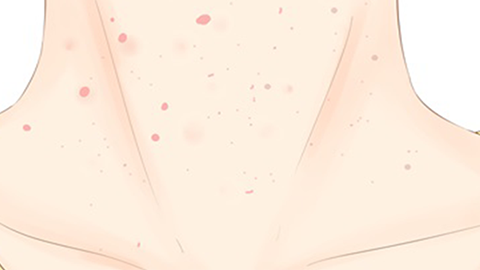Why are people more prone to developing filiform warts during lactation?
Generally, during lactation, the development of filiform warts may be caused by factors such as hormonal changes, frequent local friction, temporary immune suppression, human papillomavirus (HPV) infection, and compromised skin barrier. It is recommended to seek timely medical consultation to identify the underlying cause and receive appropriate treatment under a physician's guidance. Detailed explanations are as follows:

1. Hormonal fluctuations: During lactation, fluctuations in estrogen and progesterone levels in women may affect skin metabolism and reduce the skin's resistance to viruses. Maintaining a regular sleep schedule, avoiding late nights, and increasing intake of foods rich in vitamin C can help regulate overall physical condition.
2. Frequent local friction: Rough-textured nursing bras, frequent contact between the neck and clothing or the infant's skin while holding the baby may cause minor skin injuries on the neck. It is advisable to choose soft cotton undergarments and place a soft towel between the neck and the baby to reduce direct friction while holding the infant.
3. Temporary immune suppression: High energy consumption and insufficient sleep during lactation may temporarily weaken immunity, making the body more susceptible to viral infections. Immunity can be gradually enhanced through a balanced diet rich in protein and trace elements, ensuring adequate rest daily, and avoiding excessive fatigue.
4. Human papillomavirus (HPV) infection: Low-risk human papillomavirus may enter through skin injuries and cause abnormal proliferation of epidermal cells. As the patient is in the lactation period, medication must strictly follow medical advice. After a physician's evaluation, drugs such as recombinant human interferon α2b gel, imiquimod cream, and fluorouracil ointment may be used. Breastfeeding must be suspended during treatment.
5. Compromised skin barrier: Dry skin, improper cleansing, or pre-existing skin conditions such as eczema during lactation may weaken the skin barrier function. Mild moisturizing lotions can be used to repair the skin. If filiform warts are prominent, cryosurgery can be considered after the lactation period. This treatment uses low temperature to destroy the wart tissue and promote its removal.
Daily care should include keeping the neck skin clean and dry, avoiding scratching the warts to prevent spreading. Personal towels and pillowcases should be washed separately and disinfected regularly. Sharing with family members should be avoided to reduce the risk of viral transmission.




